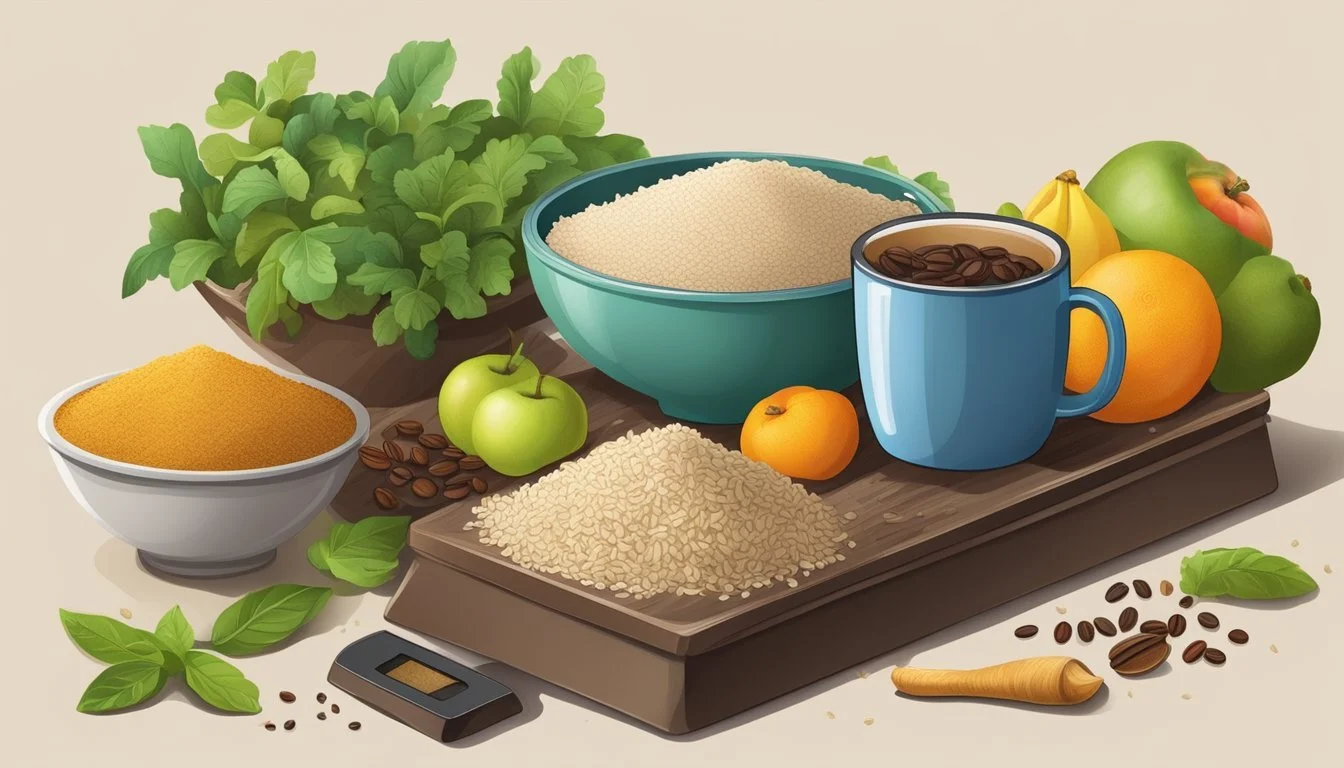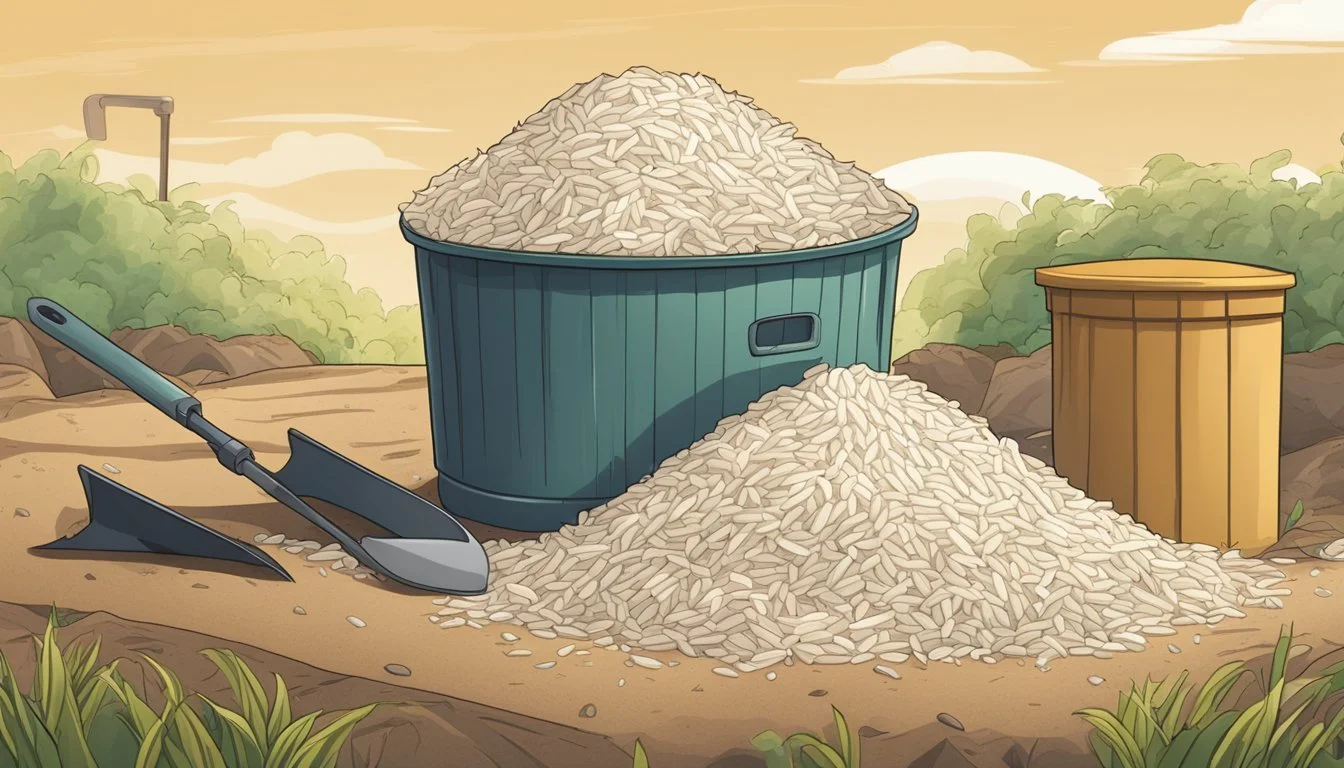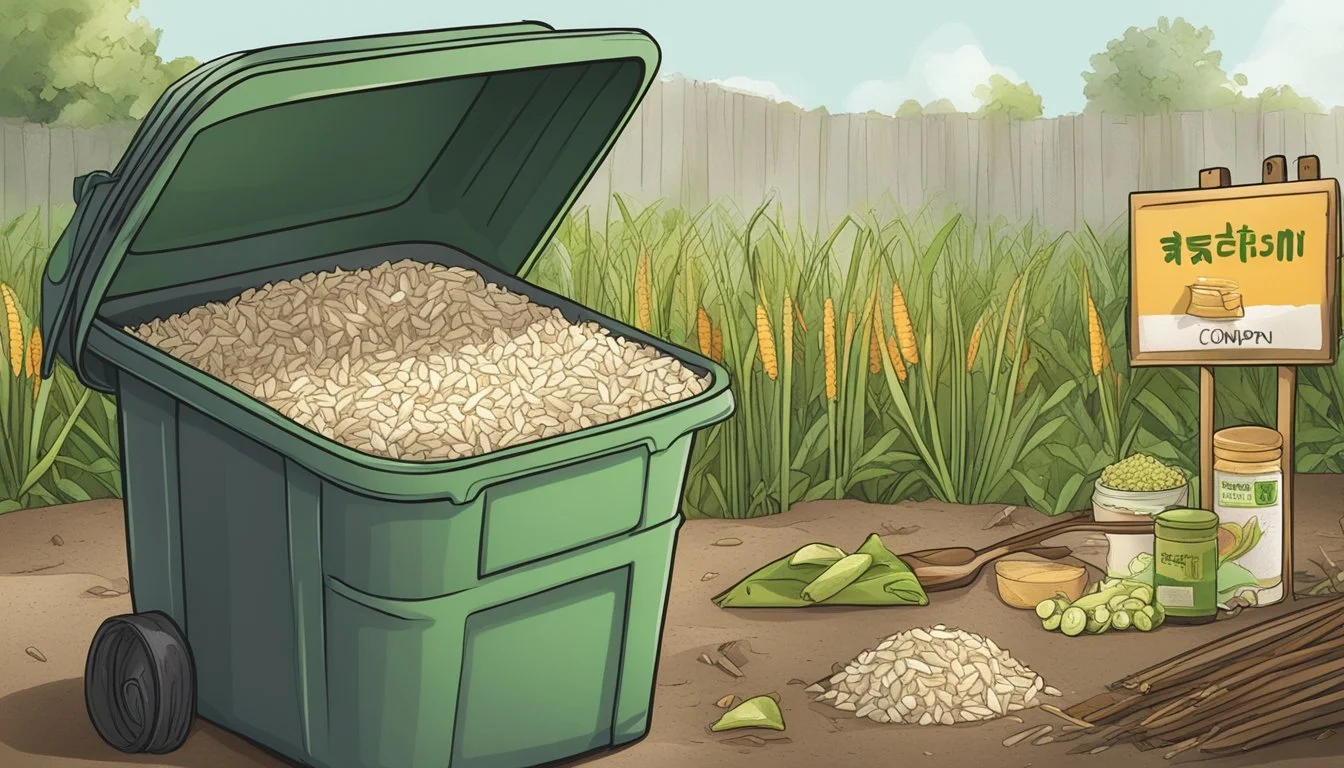Can You Compost Undercooked Rice?
Unveiling the Truth about Rice in Composting
Undercooked rice (What wine goes well with rice?) is typically seen as a waste product in the kitchen, but it does not have to end up in the trash. Composting undercooked rice is a viable option for converting this waste into a nutritious supplement for garden soil. While rice is an organic substance that breaks down over time, adding it to a compost pile requires some consideration to ensure efficient decomposition and to avoid attracting pests.
In general, undercooked rice can be composted similar to other starch-heavy kitchen scraps. However, it has unique characteristics that necessitate careful handling within the composting process. It is essential to add rice sparingly and to mix it thoroughly with other compost materials to prevent issues such as clumping, which can impede air circulation and slow down the composting process. Additionally, undercooked rice might require a longer period to decompose fully compared to other food scraps.
What Is Composting?
Composting is the natural process of recycling decomposed organic materials into a rich soil amendment known as compost.
Composting Basics
At its core, composting involves the breakdown of organic material, such as food scraps and yard waste, into smaller particles. Microorganisms, including bacteria and fungi, play a crucial role in this process, which is facilitated by the presence of oxygen. The decomposition occurs in an environment where these microorganisms thrive – a balance of oxygen, water, and temperature is essential to support their activities. Properly maintained, a compost system accelerates the natural decay of organic material, transforming it into nutrient-rich soil.
Benefits of Composting
Composting offers multiple benefits:
Waste Reduction: It significantly reduces the amount of waste sent to landfills by recycling organic materials onsite.
Soil Improvement: The resultant compost is a valuable and nutrient-rich soil amendment that improves soil structure, moisture retention, and plant growth.
Environmental Conservation: By enhancing soil health naturally, it reduces reliance on chemical fertilizers, promoting sustainability and reducing pollution.
Climate Change Mitigation: Composting can help sequester carbon and thereby reduce greenhouse gas emissions, contributing positively to climate change mitigation efforts.
Rice in Composting
The addition of rice to compost bins is a subject of debate due to its potential to decompose and attract pests. This section provides insight into whether uncooked rice can be included in compost and how it differs from composting cooked rice.
Can Uncooked Rice Be Composted?
Uncooked rice is compostable because it is an organic material. When incorporating uncooked rice into a compost pile, it is crucial to:
Add in small amounts: Prevents the imbalance of the compost pile's moisture levels and nutrient makeup.
Bury deeply within the compost: Discourages the attraction of rodents and other pests.
Brown rice and white rice, being natural substances, will decompose over time in a compost pile. However, they may attract unwanted pests if not managed correctly.
The Difference Between Composting Cooked and Uncooked Rice
Cooked Rice:
Attracts pests more readily due to its odors.
Has a tendency to mold, which can introduce harmful bacteria if not composted at a high enough temperature.
Uncooked Rice:
Decomposes more slowly and is less likely to attract pests when buried.
May still germinate and sprout if the conditions within the compost pile are right.
To compost rice effectively, whether cooked or uncooked, it is advisable to:
Incorporate it into a hot composting system to hasten decomposition.
Use a covered bin to deter pests.
Add rice sparingly to maintain the balance of the compost pile.
Compost Ingredients and Balancing
Proper composting requires a balance between nitrogen-rich and carbon-rich materials, as well as optimal moisture and oxygen levels to facilitate decomposition.
Nitrogen-Rich vs. Carbon-Rich Materials
Nitrogen-rich materials, also known as "greens," provide essential proteins and amino acids necessary for microbial growth within the compost pile. Examples include fruit and vegetable scraps, coffee grounds, and grass clippings. On the other hand, carbon-rich materials, or "browns," offer energy for the microbes through materials such as leaves, straw, sawdust, and cardboard.
Nitrogen-Rich Materials (Greens):
Fruit and vegetable scraps
Coffee grounds
Grass clippings
Carbon-Rich Materials (Browns):
Dry leaves
Straw or hay
Sawdust
Cardboard and paper
Ideal Carbon to Nitrogen Ratio
For a compost pile to decompose effectively, there's a recommended carbon to nitrogen ratio (C) of about 30:1. This balance supports a healthy microbial environment conducive to breaking down materials into compost.
Materials Carbon: Nitrogen Ratio Greens (e.g., Grass clippings) 20:1 Browns (e.g., Dry leaves) 80:1
By mixing materials to achieve this ratio, composters encourage faster decomposition and avoid issues such as bad odors or pest attraction.
Moisture and Oxygen Levels
The compost pile should maintain moisture content equivalent to a wrung-out sponge to support microbial activity. Moisture levels are crucial as too little will slow down decomposition, while too much can create anaerobic conditions, leading to odor problems.
Moisture Level:
Aim for moist but not soggy conditions.
Oxygen is equally necessary for the survival of aerobic bacteria, which break down compost materials efficiently. Turning the compost pile regularly ensures an even distribution of oxygen and heat, which are essential for maintaining a healthy composting process.
Oxygen Supply:
Turn the pile to introduce oxygen.
Avoid compaction to prevent oxygen depletion.
Composting Methods and Equipment
To ensure the successful composting of undercooked rice, it's important to understand the various methods and types of equipment available. Each method demands specific considerations, especially regarding temperature management, containment, and the decomposition process.
Hot vs. Cold Composting
Hot composting is an active approach that accelerates the decomposition of waste, including undercooked rice. A hot compost pile reaches temperatures of between 135-160°F, which is effective at killing off seeds and pathogens. This method requires a delicate balance of green material like kitchen scraps and brown material such as leaves or straw to maintain proper aeration and moisture levels. On the other hand, cold composting is a more passive technique. The materials are added to a compost bin or pile as they're collected, without the need to monitor temperatures closely.
Choosing the Right Compost Bin
When composting rice, the selection of an appropriate compost bin is crucial to control moisture and deter pests. Closed bins are preferred for rice composting, as they help maintain the necessary high temperatures for hot decomposition and protect the contents from vermin. There are multiple styles to consider:
Standard stationary bins, which are ideal for small-scale composting.
Tumbling bins, which make it easier to aerate the material by rotating the bin.
Choosing a closed bin with a secure lid is particularly important to prevent attraction of pests that may be drawn to the rice.
Vermicomposting and Bokashi Bins
Vermicomposting utilizes a worm bin or worm farm to break down organic material using the digestive power of worms, typically red wigglers. This method is excellent for small spaces and indoor composting but isn't ideal for undercooked rice as it can attract pests before the worms process it. Bokashi bins use a fermentation process with effective microorganisms to decompose kitchen waste, including rice, in a sealed container. This method can handle small amounts of undercooked rice and might be practical for those dealing with limited outdoor space or in an urban setting.
Managing Compost and Avoiding Pitfalls
Effective compost management requires balancing various elements while also preventing common mistakes that could attract pests or hinder decomposition. This involves maintaining the right conditions, avoiding missteps, and controlling pests and vermin.
Maintaining Proper Conditions
Compost thrives under specific environmental conditions, which if maintained, can ensure rapid decomposition without attracting unwanted pests. Compostable materials need ample moisture but should not be waterlogged. A general guideline for moisture is that compost should feel like a wrung-out sponge. As for temperature, a healthy compost pile should remain between 135°F and 160°F, which helps to break down materials more quickly and kill off harmful pathogens.
Aeration is crucial, so one should turn the compost regularly to introduce oxygen, preventing foul odors and accelerating the breakdown process. Materials should be mixed to allow air to reach all parts of the compost pile.
Common Composting Mistakes
Several composting mistakes can impede the process. Overloading the pile with too much water can lead to anaerobic conditions, bringing the decomposition to a halt and causing unpleasant smells. Conversely, not enough water can equally stop the process, as microorganisms need moisture to survive. Moreover, adding compostable materials unevenly, or in too large quantities without balance, particularly with items like dairy, meat, or oily substances, can lead to issues with pests and odor.
Pest and Vermin Control
When composting rice or similar materials, one must be vigilant against pests, rodents, and vermin. These attractants can be managed by burying food scraps deep within the compost pile and ensuring a proper balance of green and brown materials. Using a covered bin or a tumbler can also mitigate the risk of attracting pests. If composting undercooked rice, ensure it is added in small amounts and mixed well into the pile to prevent it from becoming a beacon for rodents.
Specifics of Rice Composting
Composting rice, whether raw or cooked, requires specific methods to prevent problems like pests and odors. Here are safe practices and extra precautions necessary for rice composting.
How to Compost Rice Safely
Composting rice safely involves incorporating small amounts of leftover rice into the compost pile to avoid the risks of attracting pests or creating bad odors. The best way to compost rice includes:
Hot composting: This technique ensures that the temperature is high enough to accelerate decomposition and kill harmful bacteria. Incorporate rice into the center of the compost pile to benefit from higher temperatures.
Balanced materials: To prevent clumping and maintain an ideal compost environment, mix rice with bulking agents such as:
Potato peels
Cardboard
Dried leaves
Shredded newspaper
Keep the compost well-aerated and maintain a balance between green kitchen waste (like leftover food) and brown carbon-rich materials.
Additional Precautions for Rice in Compost
Taking additional precautions when composting rice helps to mitigate potential problems:
Closed compost bin: Utilize a covered bin or a closed compost system to discourage rodents and other pests attracted to the rice.
Rice water: If using rice water, ensure it is plain and not salted or seasoned, as salt can harm the compost ecosystem.
Neutralize acids: To counteract any potential increase in acidity due to rice decomposition, adding a small amount of hydrated white lime can help neutralize acids.
It's also crucial to observe the compost for signs of mold growth or foul odors, which are indicators that the composting process needs to be adjusted.
Alternatives to Composting Rice
When composting rice at home is not an option, one can consider utilizing municipal compost systems or looking into other disposal methods. These alternatives provide environmentally friendly solutions for rice that cannot be traditionally composted.
Using Municipal Compost Systems
Municipal compost systems are equipped to handle a wide variety of organic waste, including undercooked rice. These facilities often maintain optimal composting conditions that can process food waste like rice more efficiently than home compost piles. Residents can contribute their rice along with other organic kitchen scraps such as vegetable peels and yard waste. Here's a simple guide:
Check Local Guidelines: Confirm with local waste management services that rice is accepted.
Separation: Place rice in the designated bin for organic or compostable materials.
Contamination: Avoid adding materials like meat or fried rice with oil and fats, as these can cause issues in some municipal compost systems.
Other Disposal Options
For those without access to municipal composting or looking to manage their undercooked rice in other eco-friendly ways, consider the following:
Vermicompost: Start a worm bin where red wrigglers turn rice and other food scraps into vermicompost.
Feeding Animals: If suitable and safe, undercooked rice can sometimes be fed to birds or animals as a treat.
Rice Hulls in Gardening: Use rice hulls for mulching or as a drainage layer in planters due to their lightweight and porous nature.
It's important to remember that while rice can often be included in these alternative systems, one should always confirm and follow specific guidelines for the disposal of different types of waste, paying particular attention to preventing attraction of pests and maintaining a healthy balance in the chosen disposal method.






